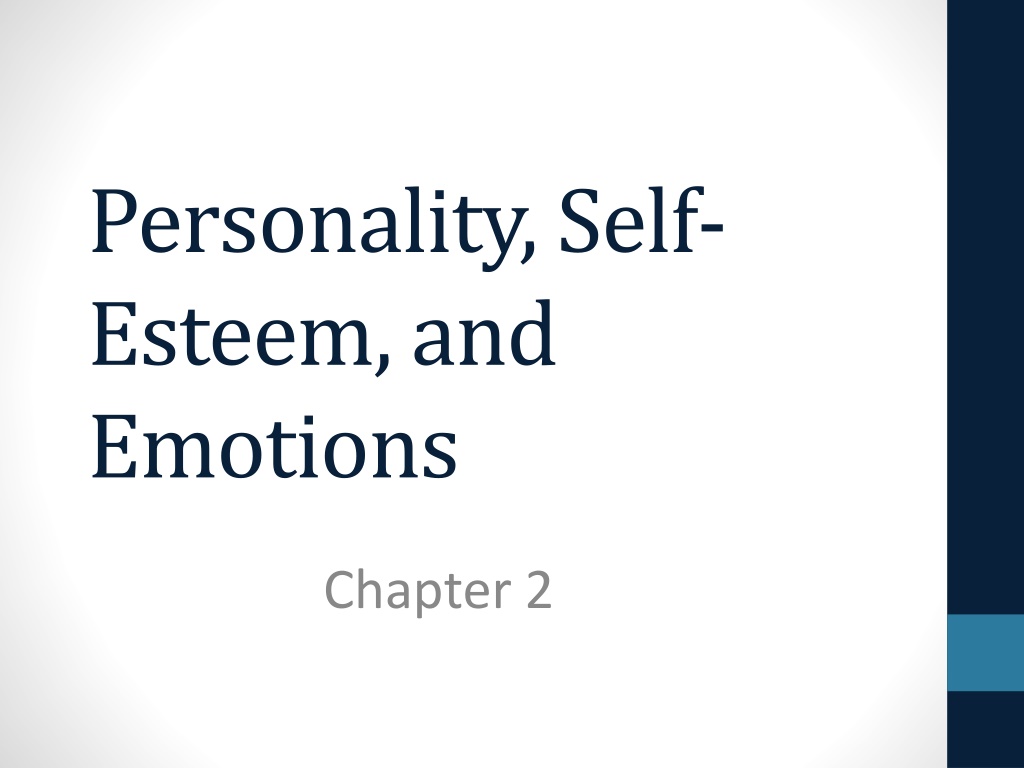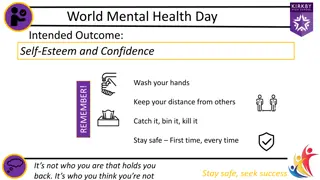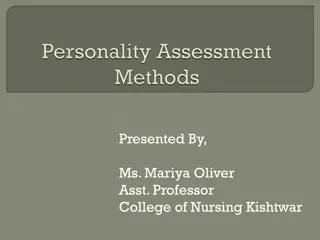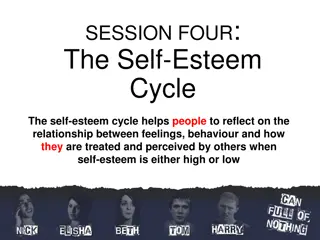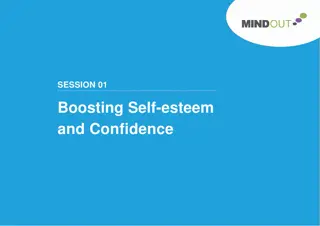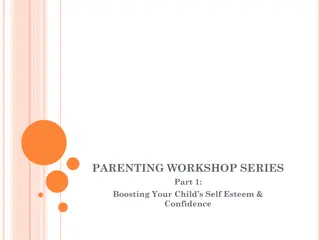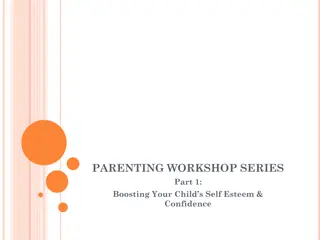Understanding Personality, Self-Esteem, and Emotions in Mental Health
Exploring the dynamics of personality traits such as extroversion, agreeableness, conscientiousness, emotional stability, and openness to experiences, this content delves into the key aspects of personality, self-esteem, and emotions. It discusses the differences between introverts and extroverts, optimism and pessimism, as well as assertiveness versus passivity or aggressiveness. Additionally, it explains how personality is influenced by both heredity and environmental factors, and introduces important psychologists and theories related to personality development.
Download Presentation

Please find below an Image/Link to download the presentation.
The content on the website is provided AS IS for your information and personal use only. It may not be sold, licensed, or shared on other websites without obtaining consent from the author. Download presentation by click this link. If you encounter any issues during the download, it is possible that the publisher has removed the file from their server.
E N D
Presentation Transcript
Personality, Self- Esteem, and Emotions Chapter 2
Personality and Mental Health Think about a place you ve been where you had one person who was the life of the party and one who sat quietly on their own. Why is this? It s because each one has a different personality. Personality consists of the unique combination of traits that make you an individual. They include behaviors, attitudes, feelings, and ways of thinking that are characteristics of you. Many researchers use 5 Central Traits to describe how people behave, relate to others, & react to change: 1) extroversion 2) agreeableness 3) Conscientiousness 4) Emotional Stability 5) Openness to Experiences
Describing Personality An extrovert is a person that is friendly and outgoing? An introvert is someone who is less outgoing and whose thoughts are directed inward? An optimist usually focus on the positive side of things? Then you would be considered an On the other hand if you look at the negative side of things and always expect the worst you would be a pessimist. Are you able to stand up for yourself and able to express your feelings in a nonthreatening way? That is assertive.
Passive means holding back your feelings and yielding to others. Aggressive means you communicate your feelings in a forceful or threating way. Psychologists are people who study the human mind and behavior. They often speak of mental health the state of being comfortable with yourself, others, and your surroundings.
2 Ways to Form Personality How Personality Forms 1. Heredity- all the traits that are passed from parent to child. Some personality traits are formed through heredity. 2. Environment is all of the physical & social conditions that surround a person & can influence that person s health. This can be your friends, family, school, and cultural group. Modeling means to copy the behavior of others. Peer group friends who are about the same age and share the same interests. P. 32 & 33
Theories of Personality Theory is an organized set of ideas used to explain something. 3 Important Psychologists 1. Sigmund Freud 2. Erik Erikson 3. Abraham Maslow
Freud Studied those who were mentally ill. He concluded the personality was made up of the id, the ego, and the superego. Id consists of biological urges Ego the thoughtful decision making part of the personality Superego part of the personality that right and wrong, or what you may consider your conscience Conscious Thoughts are those of which a person is aware Unconscious Thoughts are those of which a person is not aware. Psychoanalysis a treatment technique that brings memories into the conscious mind
Erikson Developed an 8 stage theory of Personality Development P. 34 & 35 1. Develop Trust 2. Learn to be Independent 3. Take Initiative 4. Develop Skills 5. Search for Identity 6. Establish Intimacy 7. Create and Nurture 8. Look Back with Acceptance Identity being concerned with who you are and what you want to do with your life
Maslow Theorized that everyone has a basic drive to achieve his or her fullest potential. Self-actualization process by which a person strives to be all that they can be Hierarchy of Needs P. 40 Draw the Pyramid in Figure 8
Self-Esteem Self-esteem refers to how much you like yourself and feel good about yourself. Self-esteem plays a role in many of your daily decisions. Ex. what you wear, how you interact with people. It also has a direct effect on all aspects of your health. It begins to develop when you are young through the support you receive from family. On average, self-esteem drops in early adolescence, increases gradually during adulthood, and decreases again toward the end of life. Self-Esteem Changes With Age Chart p. 38 Read Improving Self-Esteem p. 39
Expressing Emotions An emotion is a feeling, or reaction to a situation that involves a person s mind, body, and behavior. 6 Common Emotions 1. Love 2. Anger 3. Fear 4. Guilt 5. Happiness 6. Sadness Coping Strategy a way of dealing with an uncomfortable or unbearable feeling or situation
Defense Mechanisms are ways people defend themselves against difficult feelings. Common Defense Mechanisms P. 49 1. Denial 2. Compensation 3. Rationalization 4. Reaction Formula 5. Projection 6. Regression Helpful and Harmful Ways of Coping Make sure you have all of Ch. 2 Vocabulary Words Defined (14) on a separate sheet of notebook paper that will be turned in Friday before your Test. Also, make sure you turn in any assigned Section Reviews. P. 50
